 Written by Mike Price, OT
Written by Mike Price, OT
Special Needs is a term used to describe any physical, emotional, behavioral, or learning impairment requiring specialized services or accommodations, most often in reference to education or recreation.
Kids learn through play. All kids. Children with special needs might play differently, but they still need and benefit from play. Their toys should be safe, fun, and ability-appropriate, while supporting emotional, physical, and intellectual progress.
Special needs toys that support play therapy are definitely not “one size fits all.” Some children might benefit most from sensory-centered play experiences, while others might need to work on social skills or developing gross and fine motor skills. Every child has strengths and abilities and every child has areas that can be worked on through play.
| 1) Sensory Wall Panels by Enabling Devices View Product |
All children have toys they prefer. A favorite toy will get more attention and use than others, so try to get to know what means the most to the child. That will determine which toy a child will get the most out of having.
Not all kids have the same needs or will play with a toy the same way, and they might not have the ability to play with it in the way it was intended. Toys that are fun and safe for kids with physical, cognitive, or sensory challenges that don’t require a high level of focused attention, use of language or balance and coordination will keep kids engaged and enjoying play time.
If a child is receiving therapy, there could be specific therapeutic goals that toys can contribute to achieving. When another person who can help build skills participates in play with a game or toy, the activity can support desired outcomes of a treatment plan.
The special needs toys highlighted here made our top 5 list because they will keep kids engaged, they serve a range of abilities, and they fit easily into therapy plans.
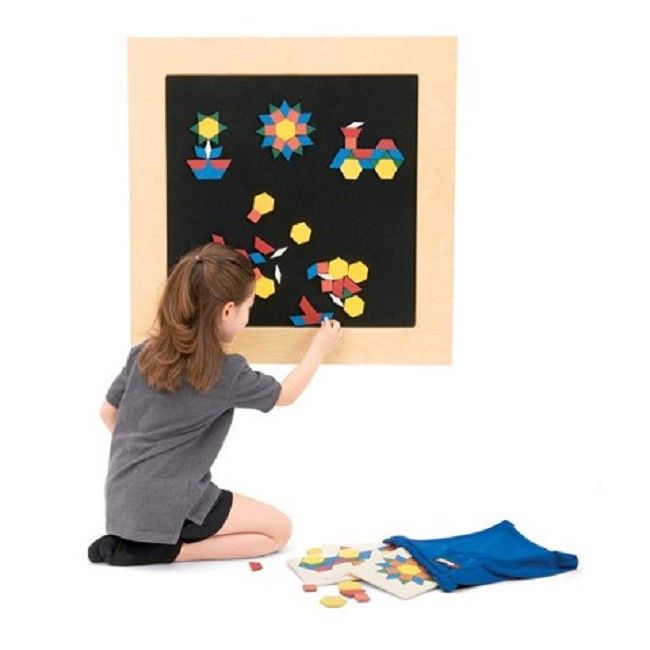
The number 5 entry on our list of top special needs toys is the Pediatric Fabric Puzzle Panel by Southpaw Enterprises. This hook-and-loop puzzle panel supports imagination and creativity while cultivating visual, hand-eye coordination, problem solving, and fine motor skills.
Kids can manipulate the 120 colorful geometric shapes on the wall-mounted textured fabric board of this tactile learning aid. Calling on small hand and finger movements to arrange shapes anywhere on the large board, this toy employs hand-eye coordination and dexterity, encourages reach in all directions, and develops fine motor skills.
Duplicating the patterns that are provided requires attention and focus. It teaches the child how to follow directions, builds critical thinking skills, and helps develop visual motor and memory matching skills.
Users can also figure out ways to put the geometric pieces together to create their own pictures, sparking developmental enrichment and imagination. The fabric is soft and accommodates most hook and loop fasteners to hold up pictures, words, and symbols.
Framed in wood, the puzzle panel is easily installed with its included hardware. It can be used as a standalone engaging piece, or with other elements of the product line including a sound and music activity panel, a fiber optic activity panel, and a tactile panel.
The skills learned through this toy can be translated into daily living activities like writing, brushing teeth, and getting dressed. It made our list of top 5 special needs toys because it supports multiple therapeutic objectives in a way kids find enriching, engaging, and fun.
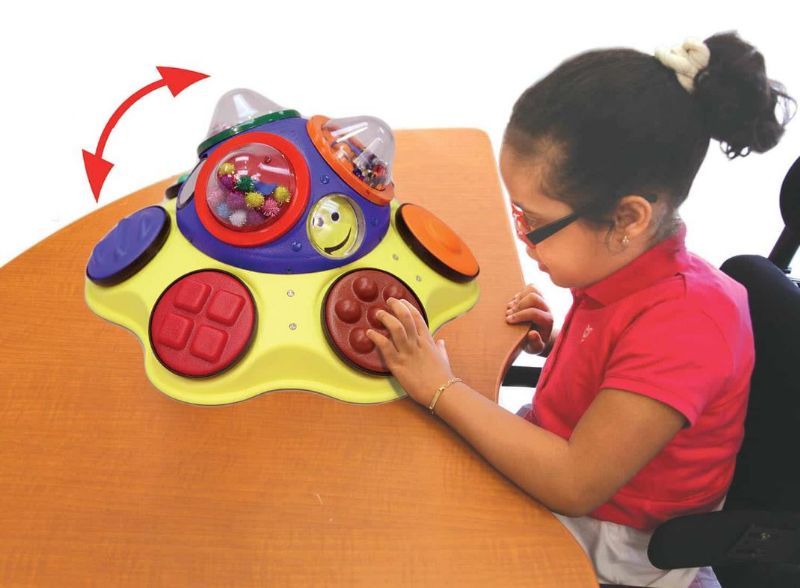
As an all-in-one sensory toy, the Busy Box for Sensory Input by Enabling Devices offers a variety of textures, sounds, and colors for an endless thrill! This activity center increases tactile awareness, helping kids perceive objects and understand how they can be used through the sense of touch.
This robust toy by Enabling Devices would make an excellent addition to your clinic or home, greatly benefiting those with dementia and autism. Studies show that tactile stimulation increases feelings of trust and relaxation in patients with dementia by giving them a positive way to interact with their caregivers. Additionally, individuals with autism can experience hyper or hyposensitivity, and by engaging in sensory-stimulating activities such as the Busy Box, they can develop sensory processing skills and be prepared to tackle sensory challenges.
With a fairly large design, the Busy Box can accommodate multiple children at once for group interaction and therapy, helping progress their social skills, coordination, and fine motor skills. It features six different activation plates with a variety of textures and colors, and with mirrors, fans, music, and spinning beads, kids can enjoy limitless entertainment.
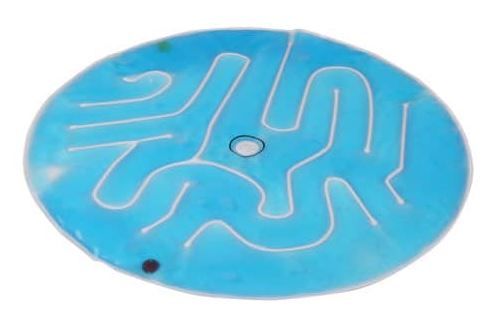
Activities in the classroom such as reading, writing, and group socialization require focused attention and defined motor skills, all of which the Padded Gel Lap Maze helps promote. Enabling Devices has created a captivating and effective therapy tool that is soft to the touch and easy to store for all-day engagement!
By needing to strategically move marbles through a spiral gel maze, patients and students enhance finger strength, hand-eye coordination, and problem-solving skills. Individuals can emulate these skills in everyday tasks such as holding writing utensils or opening food jars and with repetition, confidence and determination flourish. With the integrated maze, a user's sense of direction and critical thinking is challenged to greatly progress their intellect. It is even an excellent tool for students and patients to collaborate on getting the marbles from one place to another and improve their communication skills.
At two and a half pounds with a 17-inch diameter, this gel pad can also function as a weighted lap pad to reduce sensory overload and help with feeling calm and in control. This multi-purpose pad can be easily cleaned with soap and water, liquid disinfectants, or wipes at the end of the day. It’s also a space-saving, easy-to-store therapy tool that can be taken from room to room or across the world to all your favorite places!
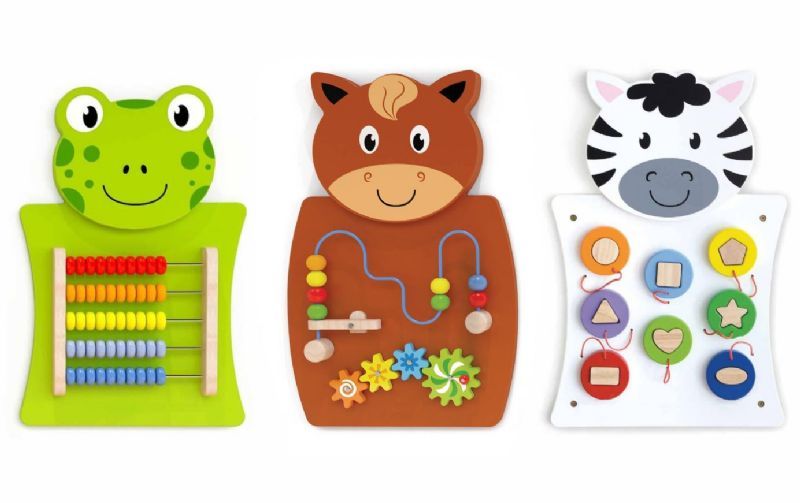
These highly engaging Activity Wall Panels from Enabling Devices offer an exciting way to develop cognitive and fine motor skills. With three different animal designs to choose from, you can bring your clinic, classroom, or home to life and watch your students or patients progress to new levels.
Unlike most flimsy and plastic activity boards, these panels by Enabling Devices are made from solid wood, meaning a lifetime of use with minimal maintenance. These panels also come with pre-drilled fixing holes and screws for seamless mounting to get your space ready in no time! Filled with lively entertainment, these boards offer a mixture of activities to mature and expand upon hand-eye coordination, muscle dexterity, and intellectual activity.
The Frog panel features a five-row abacus with colorful beads to enhance counting and color recognition skills, while the Zebra teaches shape differentiation with eight circular cutouts encased in geometric shapes. Boasting a moving bead on a wire maze, a launch lever, and a four-cog rotating system, the Horse panel cultivates strong fine motor skills.
Grasping and manipulating objects on the panel boards introduces sensory and mental stimulations, helping individuals gain confidence in their physical, mental, and social abilities. These durable panels can be ordered individually or in a variety pack of three, containing one of each panel, for a room full of exciting engagement!
Users wish there was a larger variety of panels
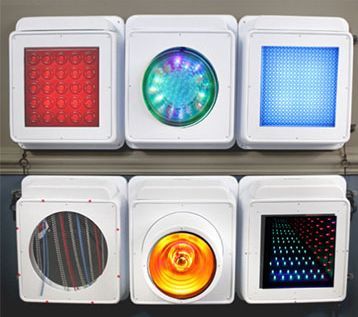
Textured Wall Mounted Touch Light Panels by Enabling Devices made our list at #1 for the way these multisensory panels help children living with sensory processing disorders. The panels’ bright lights, vibrations, textures, and sound increase sensory awareness, build motor skills and hand-eye coordination, improve tactile awareness, and encourage a child to explore.
Offering several sensory experiences, the six panels each have a unique texture. When they are touched, five of the panels play 20-second songs, and a sixth panel plays soothing nature sounds. Taking possible sensitivities into account, this wall-mounted device has adjustable vibration and volume controls.
The wall mounted track system is available in two sizes. The 1-track system holds up to three light panels, and the 2-track system holds up to six. Since they run on battery power and do not need to be located near an electrical outlet, they can be placed anywhere. To preserve battery life, they will turn off automatically when not in use.
This group of wall panels is fun and functional, delivering therapeutic benefits while creating an enjoyable play experience.
Gross motor skills involve large muscles in the torso, arms and legs and include movements like lifting, throwing, walking, running, and kicking. Gross motor skills are also related to balance, strength, reaction speed, and body awareness.
Fine motor skills are performed by the smaller muscle groups like the ones in the hand and wrist. Fine motor skills are called on in academics for activities like holding a pencil and cutting with scissors, play activities like building with blocks and doing puzzles, and self care like brushing teeth, tying shoelaces, and zipping zippers.
Mastering gross motor skills instill confidence and contribute to beneficial exercise and other physical activities.
Although gross motor skills are associated with movement within large muscle groups in physical activities, these activities have been linked to increased cognitive function and contribute to being able to pay attention and recall what’s been learned.
Visual learners learn by reading or seeing pictures. They understand and remember things by sight, preferring to see what they are learning.
Auditory learners learn by reinforcing subject matter by sound. They understand and remember what they’ve heard, store information by how it sounds, and do best with oral instructions.
Kinesthetic (tactile) learners learn through action. They find it hard to sit still and remember best, and enjoy learning most, when they can create things or experience things for their studies.
Reading/Writing learners learn by written word. They comprehend and remember what they read, and do well when taking notes on subject matter and learning through words.
Physical and cognitive impairments present challenges to children and their caregivers. Being “not like the other kids” means their experiences will not always match those of their peers who do not face the same issues. But the challenges they face do not negate their need for - or their ability to - play. In fact, the benefit of play therapy makes special needs toys an especially important element in the growth and happiness of kids who live with impairments. The toys on this list address the need for development in the quest to reach therapeutic goals, while at the same time, and equally important, creating a fun experience for every child.

Co-Founder of Rehabmart and an Occupational Therapist since 1993. Mike has spent his professional career working in multiple areas of Occupational Therapy, including pediatrics, geriatrics, hand therapy, ergonomics and inpatient / outpatient rehabilitation. Mike enjoys writing articles that help people solve complex therapeutic problems and make better product choices.